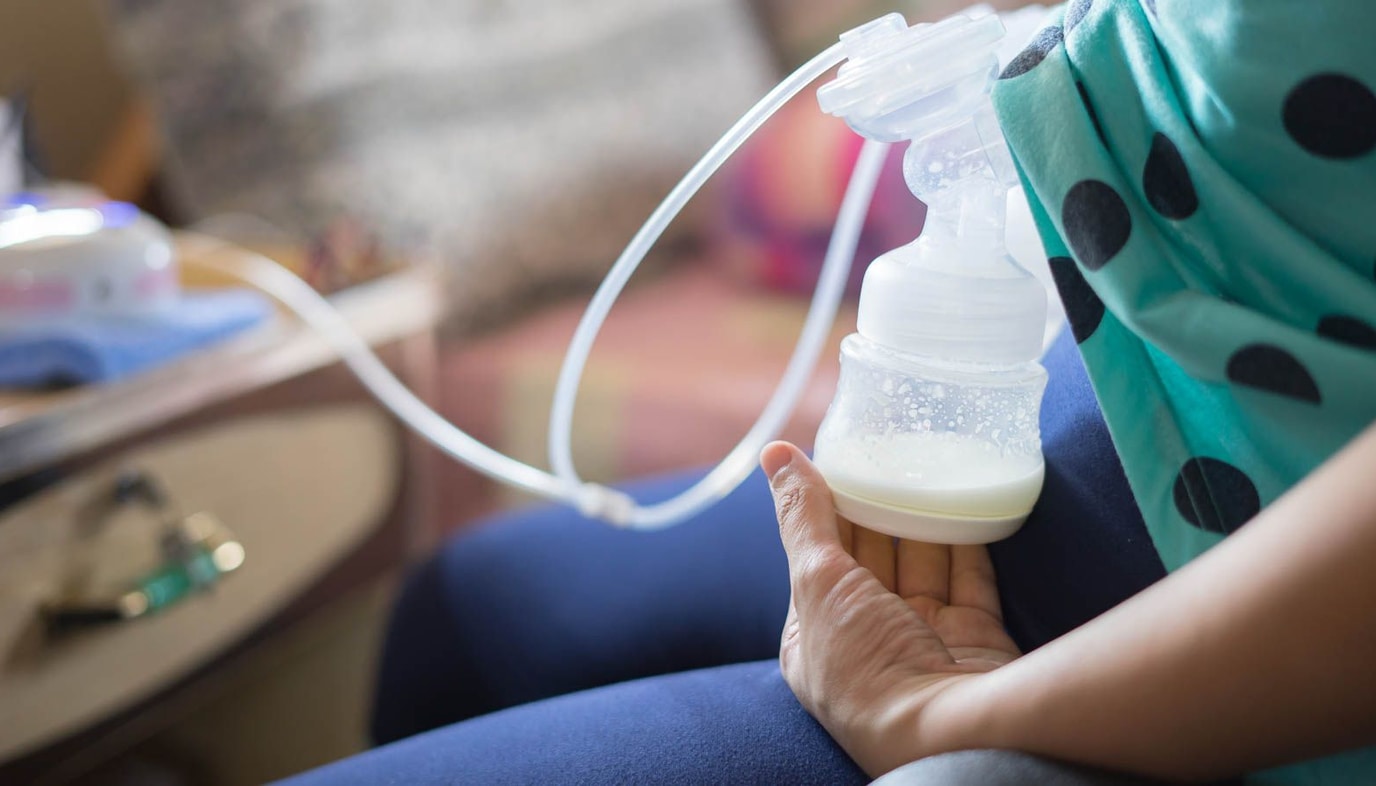
Many new moms look forward to breastfeeding as an opportunity to relax and bond with their new baby. It can be very unsettling if breastfeeding instead becomes stressful when your child starts choking on your milk! Why does this occur and what can you do about it?
First of all, don’t stress… this is one of the most easily solved nursing challenges. Your baby may be getting too much breast milk all at once due to an “overactive letdown.” In other words, your milk is coming out too forcefully when your baby suckles.
Included here are some reasons it’s happening, along with some easy solutions. But first you’ll need to figure out if you have an “overactive letdown.”
How to Spot an Overactive Letdown
If your milk is spewing forcefully from your nipples during breastfeeding, it’s probably an “overactive letdown.” Some doctors also call it “hyper milk ejection.” This occurs in some nursing women at the first letdown, but can happen several times while breastfeeding.
According to the Mayo Clinic, moms who breastfeed often and/or for long periods of time are more likely to experience an overactive letdown. No one really knows exactly why it happens—it could be from a reaction to Oxytocin (the hormone that initiates the letdown response) or from a naturally excessive milk production.

Got Too Much Milk?
If a nursing mom has an overactive letdown in the early part of feeding, the baby could get more “foremilk” than he or she really needs. That means your baby is now dealing with an overabundant milk supply, too.
FAST FACT: Breast milk is made up of foremilk (the kind your baby gets first, at the beginning of a feeding session) and “hindmilk” (the nutrient-rich type your baby gets after drinking the foremilk). It is the hindmilk that is more nourishing for your baby.
A “foremilk-hindmilk” imbalance can occur if a nursing mom changes to the other breast before the baby is done with the first one. Also, some moms make so much foremilk that the baby gets full on that. In either case, the child doesn’t get to the hindmilk.
Signs to Watch for
Does your baby choke, gag, gulp, or spit up regularly while nursing?
Is your baby refusing to breastfeed from time to time?
Does he or she pull off your breast frequently while breastfeeding?
Is your baby often gassy?
Is your baby acting “colicky,” or “distressed” in reaction to a forceful stream of breast milk?
Does your baby have trouble swallowing breast milk? (He or she could be taking in excess air with it.)
Is your baby having poor weight gain?
Does he or she have greenish, loose stools?
If you see any of these signs, you may have overactive letdown.

What to Do?
Here are some possible solutions—see what works best for you. Every mom-child nursing relationship is unique!
Pump or manually express— You can do this until you feel as if your breast milk decelerates to a slow drip. Then attempt to offer your baby your nipple. (Picture yourself pouring a big cup of milk into your own mouth all at one time—wouldn’t you have difficulty?) By getting your overactive letdown under control, both you and your baby will have a more satisfying nursing experience!
Change body position. Experiment with changing the way you place your body while breastfeeding to see if it reduces the strong letdown response—and lessens the baby’s choking problems. La Leche League suggests nursing while lying on your side to help alleviate overactive letdown.
Don’t switch sides too soon. It’s great to offer your baby both breasts at each feeding, but changing sides too quickly could interfere with your baby getting enough hindmilk. Empty each breast completely to prevent a foremilk-hindmilk imbalance. (If this occurs, you may have a great milk supply, but your baby probably will gain weight too slowly.) Your child could be getting too much of the thinner foremilk, which can lead to spitting up or choking after nursing.
Check with your pediatrician or local hospital to find lactation consultants and breastfeeding support groups in your area.
